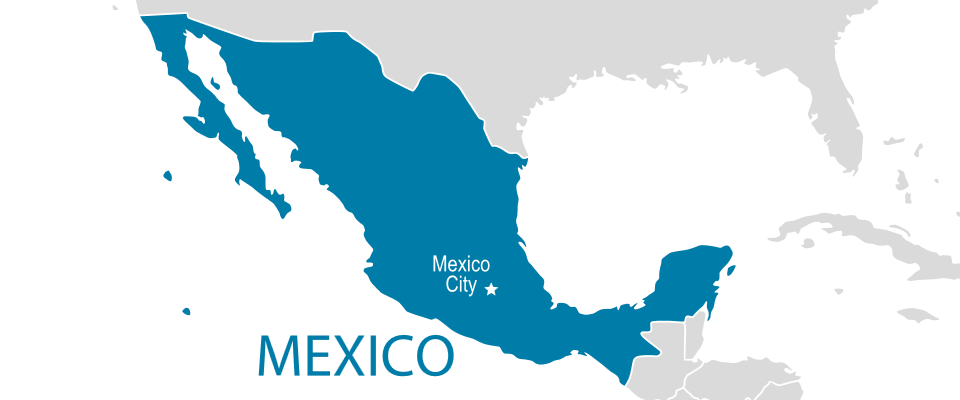Mexico – Road Freight Transportation Sector
The governments of Mexico and Germany decided to jointly design four NAMAs for key, nationally high GHG emission sectors: in new as well as existing housing, small and medium enterprises (SMEs), and road freight transport. The project also calls for the establishment of a NAMA office in Mexico.
The objective of the NAMA is to reduce GHG-emissions in Mexico´s Road Freight Transport sector with a focus on the ‘man-truck’ (an owner operator with up to five vehicles) and smaller fleet carriers (up to 30 vehicles). These two groups comprise over 60% of the total number of freight vehicles on the road. In order to modernise the fleet and promote efficient usage, two main activities are being promoted:
- Scrapping scheme to renew the fleet and
- “Transporte Limpio” to make the existing fleet more efficient.
The Mexican Scrapping scheme is a government budget programme to promote the replacement of old trucks with modern ones. Participation is voluntary; however, the scrapped vehicle must be older than 10 years. The maximum age for the replacement truck in the programme is 6 years.
SEMARNAT´s Transporte Limpio Programme is a voluntary market-driven partnership aimed at helping businesses move goods in the cleanest most efficient way possible. The main components of the programme are: 1) energy-efficient driving courses and 2) fleet upgrades with various fuel saving technologies and by reducing idling time.
Mexico‘s Road Freight Transport NAMA:
Road freight sector
In order to modernise the fleet and promote efficient usage, various activities and mitigation actions are being supported:
- Scrapping scheme to renew the fleet, Mitigation Action: Norm 044, Fuel Efficiency Norm, Technology Package for new trucks to improve fuel efficiency (Retrofit, Aerodynamic, etc.)
- “Transporte Limpio” to make the existing fleet more efficient, Mitigation Action: Technology Package for the trucks in use to improve fuel efficiency, Obligatory Eco Driving Courses (in combination with the biannual license process).
MRV activities as a basic requirement for NAMA are the FLEET Model -tool that is used to demonstrate the beneficial actions that road hauliers are taking to save fuel and reduce emissions and a Scrapping-Calculator, which calculates the GHG reduction for every truck scrapped and fleet during the programme period.
Finance activities to support the Mitigation Actions: Finance for Technology Package: The National Development Bank (NAFIN) provides freight carriers with financial support for acquiring a technology package to improve truck efficiency. Pari-Passu is a credit guarantee designed for small enterprises to reduce lending risk for banks, which significantly lowers the interest rate, making capital investment more attractive to freight carriers.
Increased Incentive for scrapped trucks: the incentive to scrap in the existing programme is below market value of the unit, so the only trucks that are scrapped are not being used anyway. Increasing the incentive is necessary to encourage the scrapping of the polluting vehicles still in use, and therefore, to improve the programme’s environmental benefit.
Partner:The principal Mexican partners in the Road Freight Transport NAMA are the Ministry of Environmental and Natural Resources (SEMARNAT) and the Ministry of Communications and Transportation (SCT). The Deutsche Gesellschaft für Internationale Zusammenarbeit (GIZ) acts as technical advisor and promotes the sharing of knowledge regionally, nationally and internationally. SEMARNAT, SCT and GIZ are jointly forming the Steering Group. The Steering Group receives additional support from The Mexican Institute of Transport (IMT), the National Commission for Efficient Energy Use (CONUEE) and the National Institute for Environment and Climate Change (INECC).
 “ProNAMA: best practices, challenges and future prospects”
“ProNAMA: best practices, challenges and future prospects”
From late 2011 to December 2015, the Mexican-German Programme for NAMAs (ProNAMA) designed a package of Nationally Appropriate Mitigation Actions (NAMAs) in the following sectors: a) energy efficiency in the new and existing buildings, b) energy efficiency in small and medium sized enterprises (SME) and c) energy efficiency in the road freight transport sector, in addition to d) providing support for setting up a national coordination system for NAMAs in Mexico.
This document compiles the main lessons learned, results and impacts of each mentioned NAMA approach, describing each context, its objectives and the technical designs. Furthermore it describes the measurement, reporting and verification system (MRV), the institutional framework settings and the inherent funding mechanisms of each NAMA approach. The objective is to share the outcomes with other interested governments, institutions and the wider public who is intending to undertake the development of NAMAs in similar sectors or to set up a national coordination system for NAMAs.
In summary, the following success factors have been crucial to achieve continuous results and impacts throughout the development of the ProNAMA:
- Strategy: linkage and alignment with government objectives; build and operate the NAMAs on existing mechanisms; get support from public policies related to the NAMA;
- Cooperation: build constant communication and linkages between actors; promote mechanisms for cooperation with new players;
- Conduction: consider the importance of the ownership of the NAMA; balance the benefits of mitigation and development;
- Processes: constant adaptation to the political times; focus on sustainability mechanisms of processes; and
- Learning and Innovation: permanent capacity building; technological approach according to sectorial context; consider that innovation is the key.
The full document can be downloaded here. http://climate.blue/producto-final-del-programa-mexicano-aleman-para-namas/ (in Spanish only)
Furthermore, the report is complemented by a virtual library in which further reports and studies developed under the ProNAMA can be downloaded here: http://climate.blue/biblioteca-pronama/.
More Information in German can be found here: http://climate.blue/abschlussbericht-zu-pronama-ist-online-best-practices-herausforderungen-und-perspektiven-fur-die-zukunft/
Downloads (in english):
 Mexico International Freight Study Research into GHG Mitigation Measures in the Smaller Carrier Freight Sector
Mexico International Freight Study Research into GHG Mitigation Measures in the Smaller Carrier Freight Sector
Downloads (in spanish):
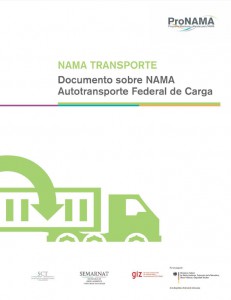 Full NAMA Concept Document Mexico download
Full NAMA Concept Document Mexico download
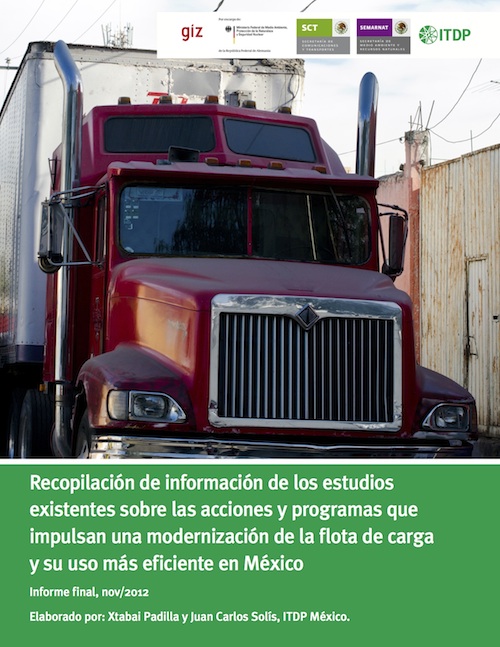 Recopilación de información de los estudios existentes sobre las acciones y programas que impulsan una modernización de la flota de carga y su uso más eficiente en Méxicodownload
Recopilación de información de los estudios existentes sobre las acciones y programas que impulsan una modernización de la flota de carga y su uso más eficiente en Méxicodownload
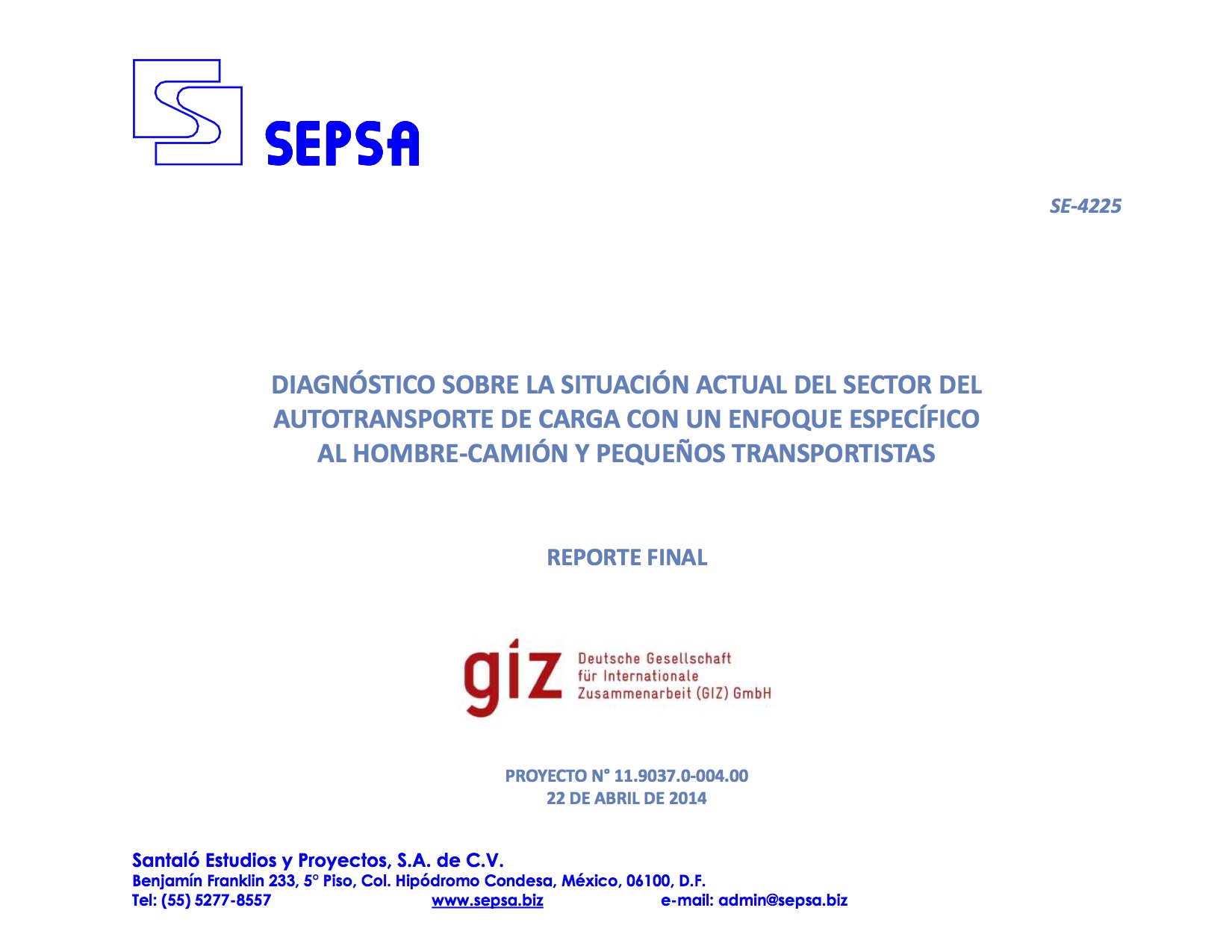 Diagnóstico sobre la situación actual del sector del autotransporte de carga con un enfoque específico al hombre-camión y pequeños transportistasdownload
Diagnóstico sobre la situación actual del sector del autotransporte de carga con un enfoque específico al hombre-camión y pequeños transportistasdownload
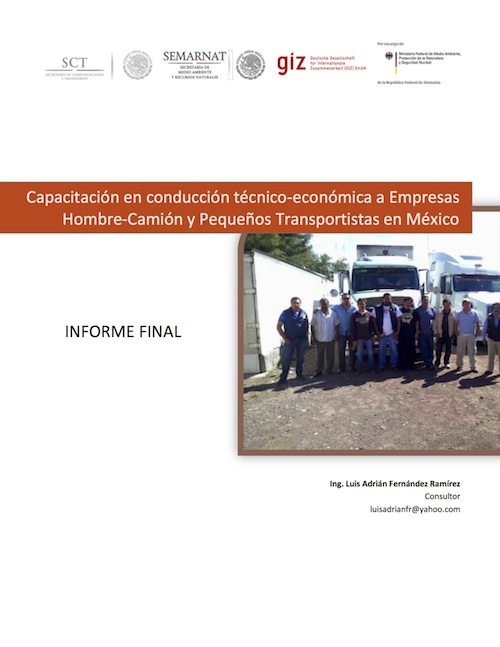 Capacitación en conducción técnico-económica a Empresas Hombre-Camión y Pequeños Transportistas en Méxicodownload
Capacitación en conducción técnico-económica a Empresas Hombre-Camión y Pequeños Transportistas en Méxicodownload
 Inventario de los Centros de Chatarrización en Méxicodownload
Inventario de los Centros de Chatarrización en Méxicodownload
 Estudio para la revisión y mejora del sistema de monitoreo, reporte y verificación en las acciones “Transporte Limpio” y “Esquema de Sustitución y Renovación Vehicular” en México download
Estudio para la revisión y mejora del sistema de monitoreo, reporte y verificación en las acciones “Transporte Limpio” y “Esquema de Sustitución y Renovación Vehicular” en México download
 Estudio sobre “Diagnósticos y planes energéticos en el transporte de carga para pequeños transportistas y hombres-camión” en México download
Estudio sobre “Diagnósticos y planes energéticos en el transporte de carga para pequeños transportistas y hombres-camión” en México download
 Diagnóstico sobre la situación actual del sector del autotransporte de carga con un enfoque específico al hombre-camión y pequeños transportistasdownload
Diagnóstico sobre la situación actual del sector del autotransporte de carga con un enfoque específico al hombre-camión y pequeños transportistasdownload
The Project is part of the German Government’s International Initiative on Climate Change, and was commissioned by the German Federal Ministry for the Environment, Nature Conservation and Nuclear Safety (Bundesministerium für Umwelt, Naturschutz und Reaktorsicherheit, BMU). The principal Mexican partners in this project are the Ministry of the Environment and Natural Resources (SEMARNAT); the Ministry of Energy (SENER); the National Housing Commission (CONAVI); and the Ministry of Communications and Transportation (SCT).
Commissoning Agency: German Federal Ministry for the Environment, Nature Conversation and Nuclear Safety (BMU)
Budget: (German Contribution): 7 million EUROs
Duration: 11/2011-10/2015

